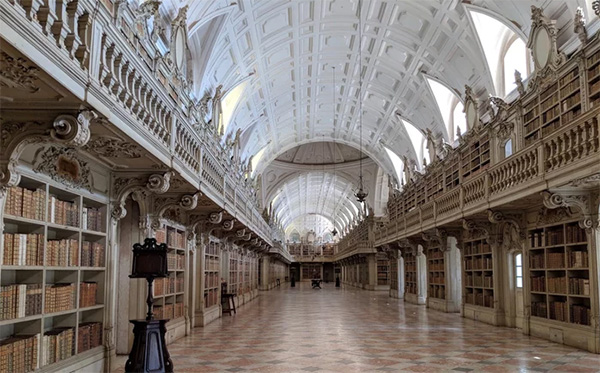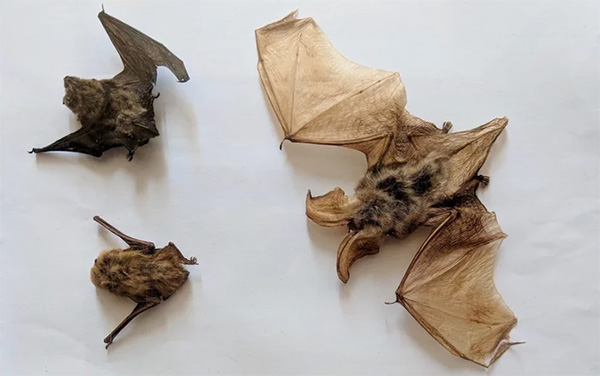Most librarians probably wouldn’t be too pleased to find a family of bats living in their library however, in Portugal, bats have taken up residence in two 18th-century libraries and it turns out they’re very useful to have around. The bats in question live in the University of Coimbra’s library and the library in the National Palace of Mafra.
The bats actually play in important role in safeguarding the libraries books as they swoop over rare and ancient books and snap up bugs that could slowly but surely destroy rare tomes. The bats offer such a helpful service that they have been allowed to stay and are now a tourist attraction in their own right.

As The Smithsonian reports, a family of Common pipistrelle bats live in Coimbra’s Joanina Library and come out at night to cleanse the library of bugs before flying off into the night in search of water. It’s unknown whether the bats have lived in the library since it was built over 300 years ago, or whether they moved in more recently, but they have been there since at least the 19th-century. When the library closes, the librarians cover the books with fabric to protect them from bat droppings and, come morning, they then remove the sheets just as their forebears have done for over a century.

The bats have become local celebrities and tourists can visit the libraries to marvel at the rare and wonderful books, and then return at sundown to watch the bats fly from the library and into town. It’s also worth visiting on rainy days as the squawks and chirps of the bats can be heard resonating through the building. Librarians say they often hear the bats “singing” and exchanging social calls on long, wet days.
Northwest of Lisbon, the library at the National Palace of Mafra is also home to a colony of bats. It’s also unknown exactly how long this family has been living there, but a bat biologist named Hugo Rebelo from the Center for Research on Biodiversity and Genetic Resources of the University of Porto, believes they’ve been there for centuries.

The bats there live among some very old tomes, including some written in the late 1400’s, and also help to keep books safe from bugs that might unknowingly chomp through a priceless manuscript. The library includes a glass case which displays three taxidermied bats that once called the library home.
Even without these cute little residents, both libraries are certainly worth a visit. The National Palace of Mafra’s library boats over 36,000 books and is considered one of Europe’s most important libraries. The stone floors are covered in rose, white, and grey marble tiles, and the shelves are filled with ancient manuscripts. And of course, thanks to our furry friends, there are no bugs to be found.

Poisonous books removed from the National Library of France

Book Returned to Scottish Library 73 Years Late

Librarian discovers cash inside book returned 53 years late




Re bats in Portuguese libraries: I couldn’t find a link to email you this comment so I can only post it here. Sorry. Another proofing issue: “The National Palace of Mafra’s library boats over 36,000 books and is considered one of Europe’s most important libraries.” Bet you meant “boasts” although “boats” are certainly more visually appealing. Your writing is otherwise excellent, imho, and I look forward to reading more of it. ~ An Old, Retired Lawyer of the Old School